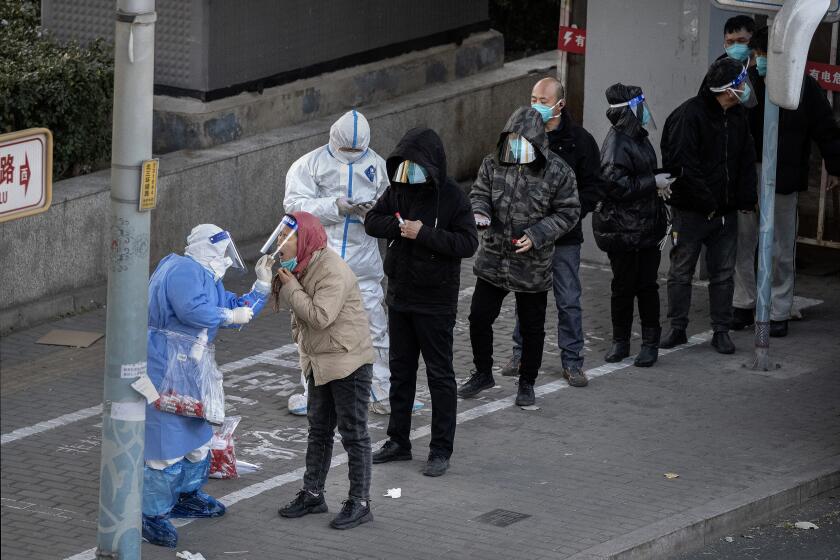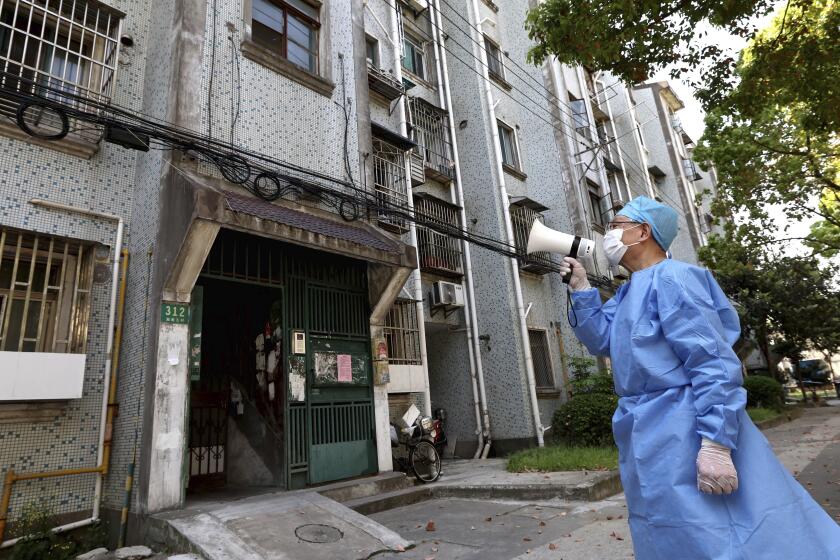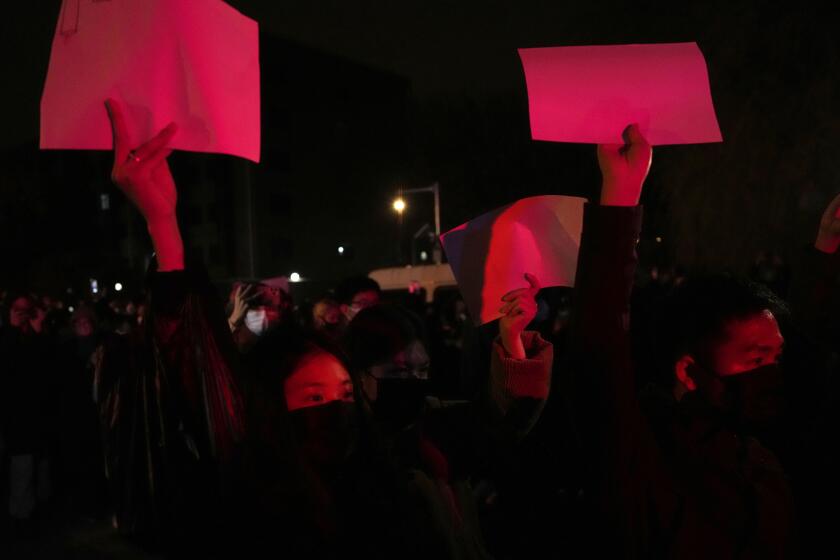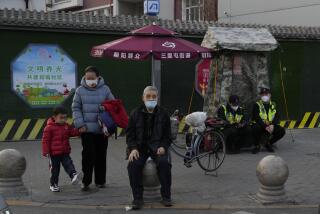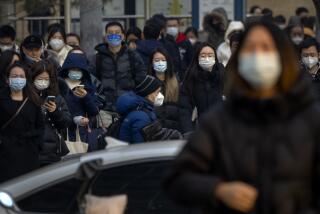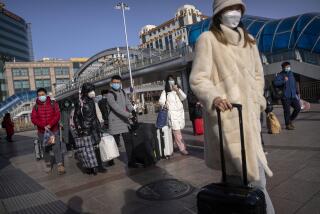Ignoring experts, China’s sudden zero-COVID exit cost lives
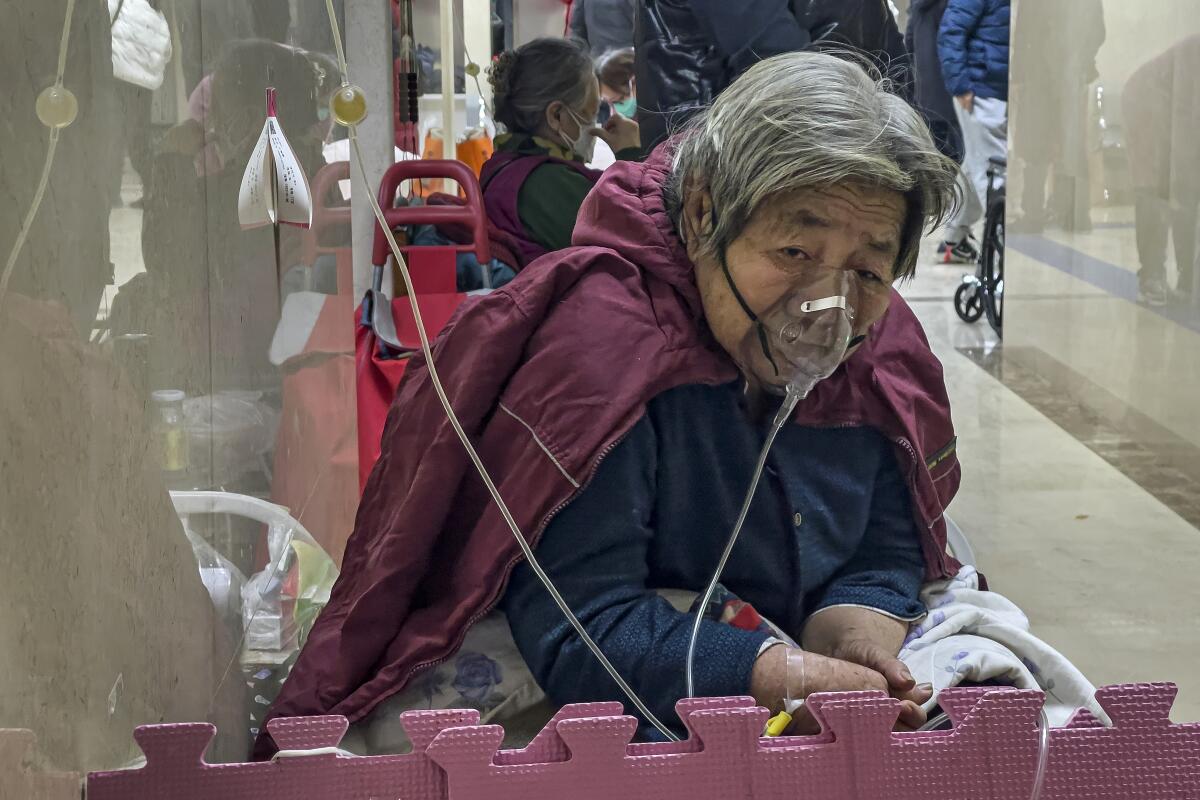
- Share via
BEIJING — When China suddenly scrapped onerous “zero-COVID” measures in December, the country wasn’t ready for a massive onslaught of cases, with hospitals turning away ambulances and crematoriums burning bodies around the clock.
Chinese state media claimed the decision to open up was based on “scientific analysis and shrewd calculation,” and “by no means impulsive.” But in reality, China’s ruling Communist Party ignored repeated efforts by top medical experts to kick-start exit plans until it was too late, the Associated Press found.
Instead, the reopening came suddenly at the onset of winter, when the virus spreads most easily. Many older people weren’t vaccinated, pharmacies lacked antiviral medicine and hospitals didn’t have adequate supplies or staff — leading to as many as hundreds of thousands of deaths that may have been avoided, according to academic modeling, more than 20 interviews with current and former China Center for Disease Control and Prevention employees, experts and government advisers, and internal reports and directives obtained by the AP.
“If they had a real plan to exit earlier, so many things could have been avoided,” said Zhang Zuo-Feng, an epidemiologist at UCLA. “Many deaths could have been prevented.”
Experts estimate that many hundreds of thousands of people, perhaps millions, may have died in China’s wave of COVID-19 — far higher than the official toll of under 90,000, but still a much lower death rate than in Western countries. However, 200,000 to 300,000 deaths could have been prevented if the country was better vaccinated and stocked with antivirals, according to modeling by the University of Hong Kong. Some scientists estimate even more lives could have been saved.
“It wasn’t a sound public health decision at all,” said a China CDC official, declining to be named to speak candidly on a sensitive matter. “It’s absolutely bad timing … this was not a prepared opening.”
Protesters in China are eager to see an easing of “zero-COVID” rules, but health experts warn that doing so could prompt a massive health emergency.
For two years, China stood out for its tough but successful controls against the virus, credited with saving millions of lives as other countries struggled with stop-and-start lockdowns. But with the emergence of the highly infectious Omicron variant last year, many of China’s top medical experts and officials worried “zero COVID” was unsustainable.
In late 2021, China’s leaders began discussing how to lift restrictions. As early as March 2022, top medical experts submitted a detailed reopening strategy to the State Council, China’s Cabinet. The existence of the document is being reported for the first time by the AP.
But discussions were silenced after an outbreak the same month in Shanghai, which prompted Chinese leader Xi Jinping to lock the city down. Chinese public health experts stopped speaking publicly about preparing for an exit, wary of openly challenging a policy supported by Xi.
By the time the Shanghai outbreak was under control, China was months away from the 20th Party Congress, the country’s most important political meeting in a decade, making reopening politically difficult. So the country stuck to mass testing and quarantining millions of people.
“Everybody waits for the party congress,” said one medical expert, declining to be named to comment on a sensitive topic. “There’s inevitably a degree of everyone being very cautious.”
At the Congress in mid-October, top officials differing with Xi were sidelined. Instead, six loyalists followed Xi onstage in a new leadership lineup, signaling his total domination of the party.
China’s leaders are clinging to their disastrous zero-COVID policy, because it worked in 2020. The regime’s authoritarian structure makes it very hard to change once a number is set.
With the congress over, some voices in the public health sector finally spoke up. In an internal document published Oct. 28, obtained by the Associated Press and reported here for the first time, Wu Zunyou, China’s CDC chief epidemiologist, criticized the Beijing city government for excessive COVID-19 controls, saying they had “no scientific basis.” He called the controls a “distortion” of the central government’s zero-COVID policy, which risked “intensifying public sentiment and causing social dissatisfaction.”
At the same time, he called the virus policies of the central government “absolutely correct.” One former CDC official said Wu felt helpless because he was ordered to advocate for zero COVID in public, even as he disagreed at times with its excesses in private.
Wu did not respond to an email requesting comment. A person acquainted with Wu confirmed he wrote the internal report.
Another who spoke up was Zhong Nanshan, a doctor renowned for raising the alarm about the original COVID-19 outbreak Wuhan. He wrote to Xi personally, telling him that zero COVID was not sustainable and urging a gradual reopening, said a person acquainted with Zhong.
In early November, then-Vice Premier Sun Chunlan, China’s top “COVID czar,” summoned experts from sectors including health, travel and the economy to discuss adjusting Beijing’s virus policies, according to three people with direct knowledge of the meetings. On Nov. 10, Xi ordered adjustments.
The next day, Beijing announced 20 new measures tweaking restrictions, such as reclassifying risk zones and reducing quarantine times. But at the same time, Xi made clear, China was sticking to zero COVID.
The government wanted order. Instead, the measures caused chaos.
With conflicting signals from the top, local governments weren’t sure whether to lock down or open up. Policies changed by the day.
In late November, public frustration boiled over. A deadly apartment fire in China’s far west Xinjiang region sparked nationwide protests over locked doors and other virus control measures. Some called on Xi to resign, the most direct challenge to the Communist Party’s power since pro-democracy protests in 1989.
Riot police moved in and the protests were swiftly quelled. But behind the scenes, the mood was shifting.
References to zero COVID vanished from government statements. State newswire Xinhua said the pandemic was causing “fatigue, anxiety and tension,” and that the cost of controlling it was increasing day by day.
Days after the protests, Sun held meetings in which she told medical experts the state planned to “walk briskly” out of zero COVID. The final decision was made suddenly, and with little direct input from public health experts, several told the AP.
“None of us expected the 180-degree turn,” a government advisor said.
First-time protesters in China grapple with how much agency they can wrest from an authoritarian government after the largest demonstrations since 1989.
Many in the Chinese government believe the protests accelerated Xi’s decision to scrap virus controls entirely, according to three current and former state employees.
“It was the trigger,” said one, not identified because they weren’t authorized to speak to the media.
On Dec. 6, Xi instructed officials to change COVID-19 controls, Xinhua reported.
The next day, Chinese health authorities announced 10 sweeping measures that effectively scrapped controls, canceling virus test requirements, mandatory centralized quarantine and location-tracking health QR codes. The decision to reopen so suddenly caught the country by surprise.
“Even three days’ notice would have been good,” said a former China CDC official. “The way this happened was just unbelievable.”
